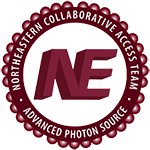De novo designed ice-binding proteins from twist-constrained helices.
Publication Type:
Journal ArticleSource:
Proc Natl Acad Sci U S A, Volume 120, Issue 27, p.e2220380120 (2023)Keywords:
Animals, Antifreeze Proteins, Caspase 1, Flounder, IceAbstract:
<p>Attaining molecular-level control over solidification processes is a crucial aspect of materials science. To control ice formation, organisms have evolved bewildering arrays of ice-binding proteins (IBPs), but these have poorly understood structure-activity relationships. We propose that reverse engineering using de novo computational protein design can shed light on structure-activity relationships of IBPs. We hypothesized that the model alpha-helical winter flounder antifreeze protein uses an unusual undertwisting of its alpha-helix to align its putative ice-binding threonine residues in exactly the same direction. We test this hypothesis by designing a series of straight three-helix bundles with an ice-binding helix projecting threonines and two supporting helices constraining the twist of the ice-binding helix. Our findings show that ice-recrystallization inhibition by the designed proteins increases with the degree of designed undertwisting, thus validating our hypothesis, and opening up avenues for the computational design of IBPs.</p>
